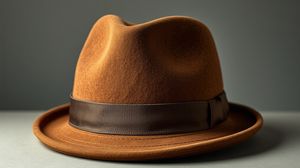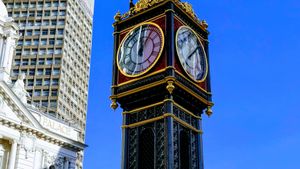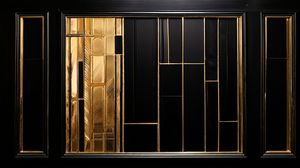
The Changing of the Guard at Buckingham Palace is one of London's most iconic and historic ceremonies. It symbolizes the official handover of responsibilities between groups of the Queen's Guard. This colorful tradition, backed by a military band, attracts visitors from across the globe keen to witness the splendor and precision of British pageantry.
The ceremony is a quintessential display of British pomp and military discipline. Guardsmen are known for their distinctive red tunics and bearskin hats. These hats can weigh up to 1.5 pounds and were originally designed to make the soldiers appear taller and more intimidating on the battlefield.
An interesting fact about the ceremony is that it has been performed at the royal residences since 1660. Although its public display is embraced today, the meticulous tradition was initially a matter of royal protocol; only over time did it transform into a cultural spectacle enjoyed by many.
Unlike many traditional ceremonies, the Changing of the Guard has adapted to modern times. Since 2017, the schedule of the ceremony has been adjusted for security and operational reasons, yet it continues to thrill visitors with its seamless execution and timeless charm.
The participating guards are not only soldiers but are also trained musicians performing various pieces ranging from patriotic anthems to selections from film scores. Each performance showcases a fusion of historical and contemporary influences, offering a unique auditory experience.
A lesser-known fact is that the guards are all active-duty soldiers in the British Army. They have served in various capacities around the world before being stationed at Buckingham Palace, highlighting their dual role as ceremonial guards and battle-ready soldiers.
The ceremony also involves an impressive set of rituals where the new guard marches to Buckingham Palace from Wellington Barracks. This grand procession is often accompanied by mounted police and offers a fleeting glimpse into Britain's rich military tradition.
Despite the grandeur of the event, most of the 30-minute ceremony is performed outdoors, providing visitors with a unique opportunity to enjoy this historic spectacle while indulging in the beauty of the royal gardens and architecture.

Making the Most of Your Visit:
If you want a good view and to avoid the crowds, arrive early. The ceremony starts at 11:00 a.m., but you'll want to be there by 10:00 a.m. to secure a good spot, especially during peak tourist season or on weekends.
Choose your spot wisely. The area in front of Buckingham Palace gets quite packed, but you can also watch the guards as they march along The Mall or approach from Wellington Barracks. These spots can sometimes offer a better view with fewer obstructions.
Check the schedule before you go. The ceremony doesn't take place every day, and the schedule can vary based on the season and weather conditions. Make sure your day aligns with when it's happening to avoid disappointment.
Travel light and be prepared to stand. There's limited seating, and you might be on your feet for a while. Bringing some water and a light snack can make the wait more comfortable.
Extend your experience by following the New Guard's procession back to Wellington Barracks after the ceremony. Many miss this part, but it's a great way to see the guards and bands in action without the crush of the crowd.

Visiting Times & Costs:
The Changing of the Guard at Buckingham Palace is open to the public and is free to watch. This iconic event typically happens several times a week, although the schedule can vary depending on the season and specific operational needs.
Opening Times:
- The ceremony usually takes place at 11:00 a.m., with no events scheduled on most Sundays. The exact days can vary, especially in winter months, so it is advised to check the latest schedule prior to your visit.
Cost: There is no charge to watch the ceremony; it is free for everyone.
Accessibility:
- While the event is accessible to all, including those with mobility issues, it is important to note that the area can become very crowded, which might pose problems for some visitors in wheelchairs or with mobility concerns.
- There is limited seating and most of the viewing is standing room only, so those with difficulties standing for extended periods should plan accordingly.

Address & Map:

Nearby:























